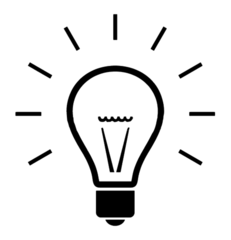Project:Aquarium Edge Illumination: Difference between revisions
probably only interesting for myself so far :-P |
→Make: first prototype |
||
| Line 37: | Line 37: | ||
== Make == | == Make == | ||
=== 3D Printing === | |||
The first prototype for the 3D printed holders sat on the glass very well but was of course not perfect yet and missing some important features. These will be improved in the next version: | |||
* lip to shield the top camera from direct light | |||
* slightly wider slots (+0.2 mm) so the screws slide freely | |||
* move "legs" to the edges so the LED strip's range of movement is increased and there is room for wing nuts "outside" | |||
* longer slots on all parts | |||
* deal with various design bugs in Fusion... | |||
[[Category:Labware]] | [[Category:Labware]] | ||
<!-- mehr (Electronics, Arduino, 3DP etc) wenn Info darüber drin ist --> | <!-- mehr (Electronics, Arduino, 3DP etc) wenn Info darüber drin ist --> | ||
<!-- eventuell in "Water Contest" eintragen? https://www.instructables.com/contest/water/ (bis 27.8.) --> | |||
Revision as of 11:18, 18 July 2018
| ProjectInfoBox Aquarium Edge Illumination | |
|---|---|

| |
| Status: | in progress |
| Release Date: | June 2018 |
| Initiator: | Lukas |
| Materials Used: | LED strips, Arduino UNO |
| Software Used: | Fusion 360 |
| Approx. Cost: | approx. 20 € (without the Arduino) |
For my current research project, I need to film fish in a small aquarium (5-8 L) from the side and the top.
After some less succesful attempts, it seems the most even lighting that will not obstruct the top camera is a rectangle of LED strips along the top edge.
Initial Situation
Design Goals
- light intensity & angle controlled independently for each side
- electronics protected from the water
- controlled from at least 1 m away
Constraints
- LED strip: "YourLED" 40 LED/m daylight (6000 K)
- (somewhat) waterproof silicone cover
- analog control
- 3 mm thick
- 10.5 mm wide
- splittable every 7.5 cm
- aquarium: 4 mm thick glass, partially laid out with 3 mm thick rigid foam board (probably PVC)
- outside 26.5 × 18.9 × 23.1 cm
- inside (top) 25.6 × 18.2 × 22.5 cm
- ! protruding glass pieces (17 × 99 mm) at short sides 7.3 mm below the edge
Approach
I will try cutting the LED strip into two 15 cm and two 22.5 cm pieces which will be powered through separate MOSFETs that are controlled by an Arduino microcontroller. The holders for the strips will be 3D printed and allow angle adjustments. Electronic connections will be protected by silicone and/or heatshrink. A control panel with dials for each strip's brightness would help with the setup process but is not a priority.
Make
3D Printing
The first prototype for the 3D printed holders sat on the glass very well but was of course not perfect yet and missing some important features. These will be improved in the next version:
- lip to shield the top camera from direct light
- slightly wider slots (+0.2 mm) so the screws slide freely
- move "legs" to the edges so the LED strip's range of movement is increased and there is room for wing nuts "outside"
- longer slots on all parts
- deal with various design bugs in Fusion...